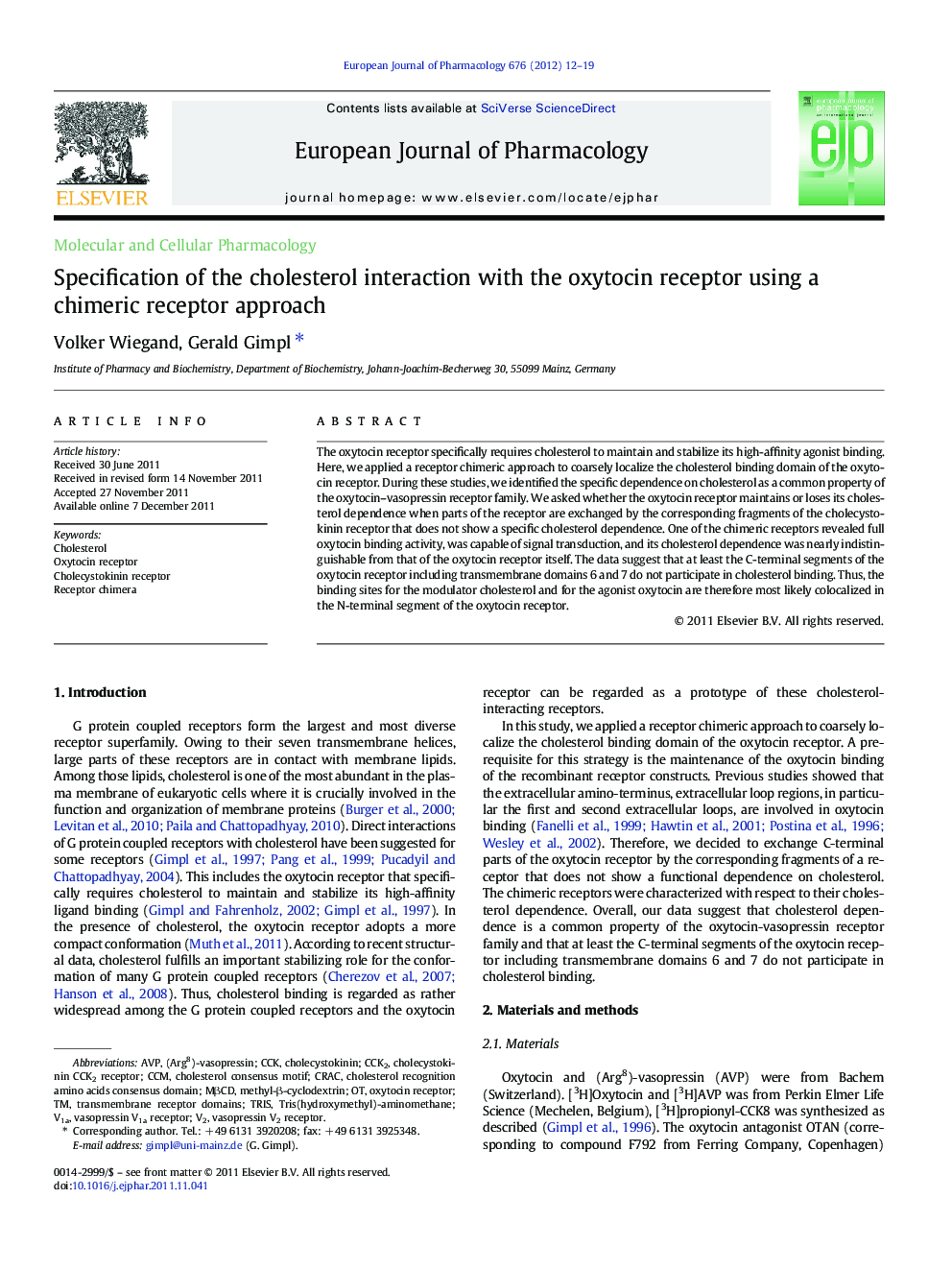| Article ID | Journal | Published Year | Pages | File Type |
|---|---|---|---|---|
| 2532381 | European Journal of Pharmacology | 2012 | 8 Pages |
The oxytocin receptor specifically requires cholesterol to maintain and stabilize its high-affinity agonist binding. Here, we applied a receptor chimeric approach to coarsely localize the cholesterol binding domain of the oxytocin receptor. During these studies, we identified the specific dependence on cholesterol as a common property of the oxytocin–vasopressin receptor family. We asked whether the oxytocin receptor maintains or loses its cholesterol dependence when parts of the receptor are exchanged by the corresponding fragments of the cholecystokinin receptor that does not show a specific cholesterol dependence. One of the chimeric receptors revealed full oxytocin binding activity, was capable of signal transduction, and its cholesterol dependence was nearly indistinguishable from that of the oxytocin receptor itself. The data suggest that at least the C-terminal segments of the oxytocin receptor including transmembrane domains 6 and 7 do not participate in cholesterol binding. Thus, the binding sites for the modulator cholesterol and for the agonist oxytocin are therefore most likely colocalized in the N-terminal segment of the oxytocin receptor.
Graphical abstractFigure optionsDownload full-size imageDownload high-quality image (212 K)Download as PowerPoint slide
